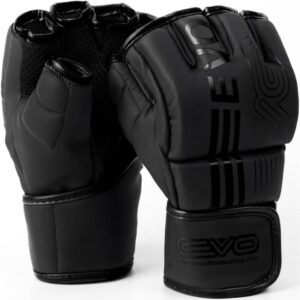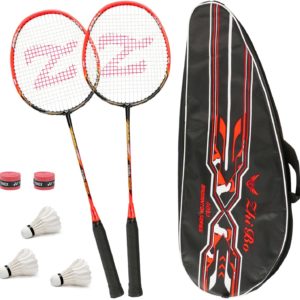Climbing Ropes | Rope To Climb | Hanging Ropes
Original price was: £79.£59Current price is: £59.
FREE FAST DELIVERY ACROSS THE UK ON ALL ORDERS £75+ or more (save £25)
Whether you’re scaling heights, exploring caves, or setting up camp, our durable polyester rope is designed to meet your needs. Its combination of strength, portability, and versatility makes it an indispensable tool for outdoor enthusiasts, adventurers, and professionals alike.
SPECIFICATIONS
- Length: 20m
- Diameter: 12mm / 0.5″
- Load Weight: 1200kg


DUE TO CURRENT DEMAND
PLEASE ALLOW 5-7 DAYS DELIVERY
Original price was: £79.£59Current price is: £59.




Material Excellence
Impressive Load-Bearing Capacity
Compact and Portable
Versatile Use







-
HOW DO I KNOW IF MY ORDER HAS BEEN SHIPPED?
Once your order is shipped, it will be marked as complete in our database and you will receive a confirmation email with a tracking number.
-
I HAVEN'T RECEIVED MY ORDER YET! IS IT LOST?
If you have any concerns with your order, please contact our support team by email and they will be glad to assist you. Most emails are answered within 1 business day.
Support Team: theteam@customersupport.care
-
WHAT ARE YOUR DELIVERY OPTIONS AND HOW LONG WILL IT TAKE?
- UK: Free delivery, 5-7 days
- Other countries: Free delivery, 7-10 days
OUR DELIVERY PARTNERS

-
DO I GET A RECEIPT FOR MY ORDER?
You will be sent a receipt for your order by email after payment is made. You will also receive a confirmation email with a tracking number once your item has been shipped.
-
DO YOU HAVE A SHOP LOCATION?
We are a “online supplier”, with no physical shop or premises. In this way, we are able to pass our considerable savings directly to you.
-
WHAT CURRENCY ARE THE PRICES DISPLAYED IN?
All of our prices are displayed in £GBP – British Pounds
-
WHICH PAYMENT METHODS ARE ACCEPTED?
We currently only accept credit card payments, PayPal & Crypto currency. More payment methods will be added in the future.
-
What is the safest way to use Climbing Ropes?
The safest way to use Climbing Ropes is by ensuring they are properly anchored, routinely checking for wear and damage, and always using a rope suitable for the climb’s specific conditions and requirements.
-
Are Climbing Ropes waterproof?
Many Climbing Ropes come with a dry treatment that makes them more resistant to water, which is essential for climbing in wet conditions as it prevents the rope from becoming heavier and weaker.
-
What knot should I use to tie a Climbing Rope?
The most common knot for tying into a Climbing Rope is the figure-eight follow-through, known for its strength and ease of untying after being loaded, making it a reliable choice for climbers.
-
Can Climbing Ropes be used for other activities?
Yes, Climbing Ropes can be used for other activities such as caving, rescue operations, and even as a part of fitness regimes, demonstrating their versatility.
-
How often should I replace my Climbing Rope?
Replace your Climbing Rope if you notice any signs of wear, such as fraying, stiffness, or discoloration, or after a severe fall or about every 5 years under normal usage conditions.
-
Do Climbing Ropes come in different colors?
Yes, Climbing Ropes are available in a variety of colors, which can help climbers distinguish their rope from others and can add an element of personal preference or safety through higher visibility.
-
How much does a quality Hanging Rope cost?
A quality Hanging Rope can cost anywhere from $100 to $300, depending on the type, length, and specific features like dry treatments which protect against moisture.
-
How can I extend the lifespan of my Rope to Climb?
Extend the lifespan of your Rope to Climb by avoiding sharp edges while climbing, using a rope bag to protect it from dirt, and following proper cleaning and storage protocols to maintain its structural integrity.
-
How do I clean my Hanging Rope?
Clean your Hanging Rope by washing it in lukewarm water with mild soap, gently scrubbing away dirt and then allowing it to air dry completely before storage.
-
How do I choose the right Rope to Climb?
Choose a Rope to Climb based on the type of climbing you do, the rope’s diameter, length, and whether you need a dynamic (elastic) rope for rock climbing or a static (non-stretch) rope for rappelling.
-
What are Climbing Ropes used for?
Climbing Ropes are essential for safety in climbing sports, used to secure climbers as they ascend or descend, and are vital for preventing falls.
-
What is the best way to store Rope to Climb?
Store your Rope to Climb loosely coiled in a cool, dry place away from direct sunlight to avoid material degradation, which can compromise the rope’s integrity and safety.
-
How does weight impact the choice of a Climbing Rope?
Heavier Climbing Ropes tend to be more durable and have a higher fall rating, whereas lighter ropes are easier to handle and better for long multi-pitch climbs or alpine routes.
-
What precautions should be taken when climbing with an old Climbing Rope?
When climbing with an old Climbing Rope, it’s crucial to thoroughly inspect it for damage and consider using it only for less demanding climbs or relegate it to ground practice to minimize risk.
-
Are there different types of Ropes to Climb?
Yes, there are several types of Ropes to Climb including single, double, and twin ropes, each designed for specific climbing situations and offering varying levels of safety and flexibility.
-
What is the best Hanging Rope for indoor climbing?
The best Hanging Rope for indoor climbing typically has a medium diameter (around 10mm) and a relatively static nature to withstand the frequent falls and abrasion associated with indoor settings.
-
What diameter of Rope to Climb is most common?
The most common diameter of a Rope to Climb for general use is between 9.5mm and 10.5mm, providing a good balance between strength, durability, and handling.
-
What are twin Ropes to Climb used for?
Twin Ropes to Climb are used by clipping both ropes through the same piece of protection and are ideal for alpine climbing where lightweight and redundancy are crucial.
-
Can single Ropes to Climb be used for rappelling?
Single Ropes to Climb can be used for rappelling, but ensure the rope is long enough for the descent and always check manufacturer guidelines to confirm if your rope is suited for multiple types of climbing activities.
-
Where can I learn proper techniques for using Climbing Ropes?
Proper techniques for using Climbing Ropes can be learned through certified climbing courses, experienced climbing partners, or instructional videos from reputable sources, ensuring you are well-prepared and safe while climbing.
-
Are there eco-friendly options for Ropes to Climb?
Yes, some manufacturers now offer eco-friendly Ropes to Climb made from recycled materials or employing sustainable manufacturing practices, reducing the environmental footprint.
-
How long should my Climbing Rope be?
The length of your Climbing Rope should be based on the height of the climbs you plan to undertake. Most sport climbing ropes are between 30 and 80 meters.
-
Can I repair a frayed Rope to Climb?
Minor frays in a Rope to Climb can sometimes be melted or trimmed if they are at the ends, but major damage typically requires the rope to be retired to ensure optimal safety.
-
What materials are used to make Hanging Ropes?
Hanging Ropes are typically made from nylon or polyester, offering strength and durability while providing some elasticity to absorb the energy of falls.
-
What safety certifications should Hanging Ropes have?
Look for Hanging Ropes that meet safety certifications from organizations like UIAA or CE to ensure they have been tested for strength and durability under various conditions.
-
How do I know if my Hanging Rope is still safe to use?
Inspect your Hanging Rope regularly for any signs of wear such as cuts, excessive abrasion, or unusual stiffness. If in doubt, retire the rope from critical use to ensure safety.
-
Can I use a Climbing Rope for other sports?
While Climbing Ropes are primarily designed for climbing, they are sometimes used in other applications requiring strong, elastic ropes, such as certain rescue operations or adventure sports, under proper safety considerations.
-
How does UV exposure affect Climbing Ropes?
UV exposure can weaken Climbing Ropes by breaking down the fibers over time, significantly reducing their strength and safety, hence it’s important to store ropes out of direct sunlight and check periodically for UV damage.
-
What features do advanced Hanging Ropes offer?
Advanced Hanging Ropes may feature bi-pattern or duo-tone markings to indicate the middle of the rope, enhanced dry treatments, and improved sheath constructions for better abrasion resistance.
-
What is a kernmantle rope?
A kernmantle rope, common in climbing, consists of two parts: the kern (core) which provides strength and elasticity, and the mantle (sheath) which protects the core from abrasion and UV damage.
Reaching New Peaks: The Essential Guide to Climbing Ropes
Climbing is more than a sport; it’s a journey that challenges both body and mind, pushing enthusiasts to their limits while offering unparalleled rewards. Central to this adventurous pursuit are climbing ropes, the lifelines that ensure safety and performance in the vertical world. Whether you’re scaling a craggy cliff outdoors or testing your skills on an indoor wall, selecting the right rope to climb is crucial. This guide explores the essentials of hanging ropes, from types and features to maintenance tips, ensuring you’re well-equipped for your next ascent.
The Significance of Climbing Ropes
A climbing rope is more than just equipment; it’s a climber’s best ally. It’s the critical link between the climber, the belayer, and the rock. Choosing a durable and reliable rope to climb can mean the difference between a successful climb and an unforeseen mishap. With the variety of hanging ropes available, understanding the specifics can help you select the rope that best suits your climbing style and needs.
Types of Climbing Ropes
Climbing ropes can be broadly categorized into two main types, each designed for specific climbing scenarios:
- Dynamic Ropes: These are elastic ropes that stretch under load, designed to absorb the energy of a fall. They’re essential for lead climbing, where the potential for longer falls exists.
- Static Ropes: With minimal stretch, these ropes are ideal for rappelling, top-roping, or any situation where you don’t want the rope to stretch significantly under weight.
Choosing Your Climbing Rope
When selecting your climbing rope, consider the following key factors:
- Diameter: Thicker ropes (around 10mm and above) are more durable and better suited for heavy use, while thinner ropes (around 9mm to 9.9mm) are lighter and best for performance climbing.
- Length: The length of your rope to climb should be based on your climbing objectives. Common lengths range from 60m to 70m, but it’s essential to choose a rope that covers the distance of your longest planned descents or climbs.
- Safety Ratings: Look for ropes with high fall ratings and impact force ratings, indicating the rope’s strength and ability to withstand falls.
Maximizing Safety and Performance with Climbing Ropes
To get the most out of your climbing ropes, adhere to these best practices:
- Regular Inspection: Before and after each climb, inspect your rope for signs of wear, such as fraying, cuts, or significant fading.
- Proper Use: Always ensure that your hanging ropes are used in accordance with their intended purpose—dynamic ropes for lead climbing and static ropes for rappelling or top-roping.
- Maintenance: Keep your rope clean and free of dirt to extend its lifespan. When necessary, wash your rope with mild soap





Reviews
There are no reviews yet.